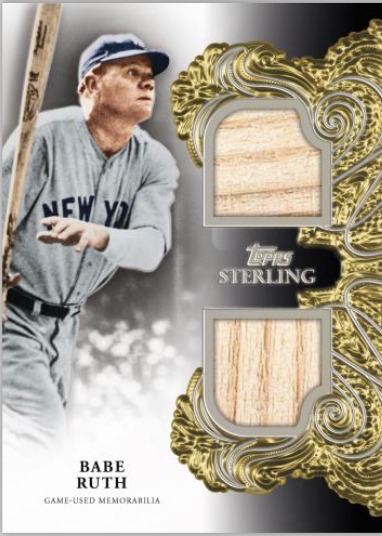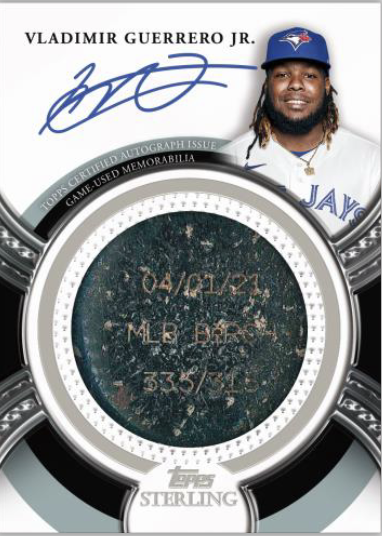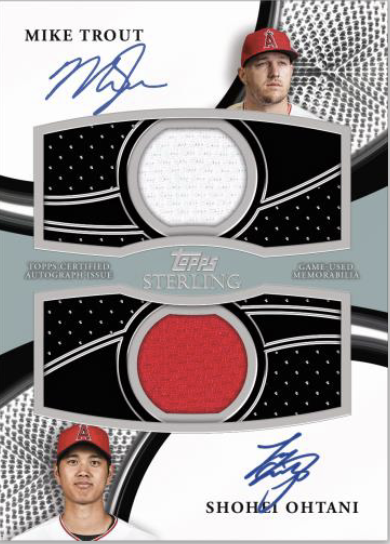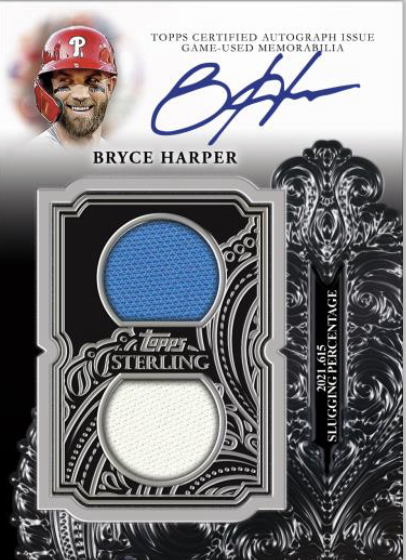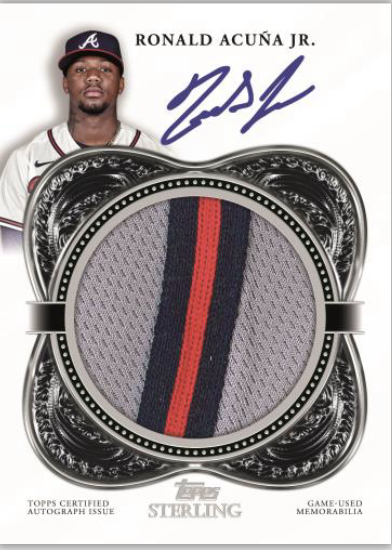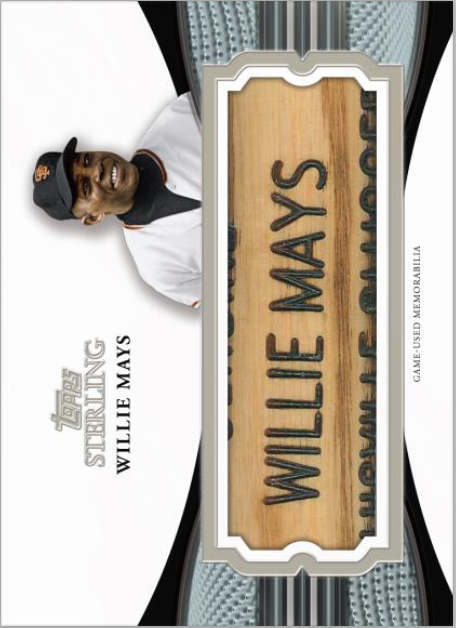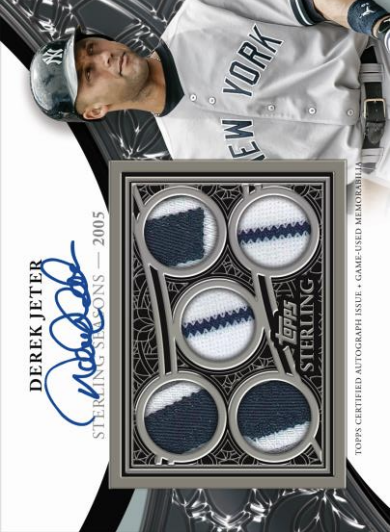
How Pen on Wax Became a Hobby Staple
In the early 1990s, Jeremy Fullerton was an avid collector and soon-to-be trading card shop employee, still about 15 years from beginning his longtime Topps career. When he looks back on that era, he remembers a defining moment in his collecting journey: Any random fan could suddenly find a card autographed by their heroes in any random pack.
He remembers (and still owns) the first auto he ever pulled — it belonged to hockey goaltender Manon Rhéaume, the first woman to appear in an exhibition game in any major North American pro sports league.
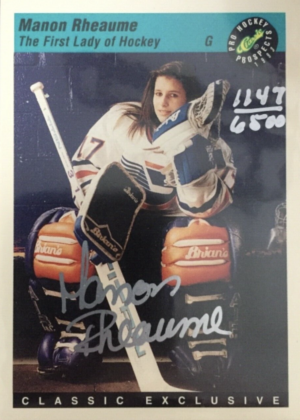
“The idea that you could get an autograph card in any pack of cards was mind-blowing to me,” said Fullerton, who’s now the brand director for Topps Baseball.
You don’t have to have a collection like Pat Neshek’s to appreciate a good auto. Here, we’ll dive into the history of signed cards in packs, get the scoop on Topps’ signature verification process, and preview a new auto-heavy Topps product coming soon.
A History of John Hancocks
Though collectors have been securing signatures on baseball cards for almost as long as cards have existed, the first auto card to appear in packs wasn’t until 1990. That was an Upper Deck Reggie Jackson auto, numbered to 2,500. The brand advertised the signatures on boxes for that 1990 set, daring collectors to “Find ‘The Reggie.'”
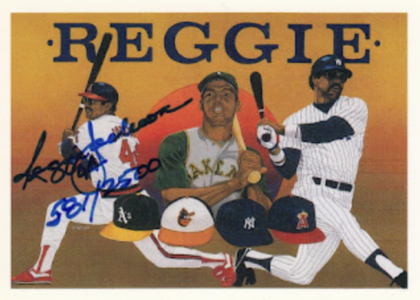
Fullerton never pulled one of those Jackson autos, but he still remembers the thrill from pulling Rhéaume’s. “It was hand-numbered to 6,500, and that seemed so rare at the time,” he quipped.
And while autos have always been popular, general demand for trading cards is higher now than ever before, and that rising tide has lifted every ship in the trading card lineup.
Indeed, what started as one or two athletes signing cards for a given product has ballooned into a much larger operation. With far more products in each card company’s catalog than in the 1990s and growing subject lists showcasing legends of the game, current All-Stars, and the stars of tomorrow, autographs are continually evolving.
That, of course, can be a lot for card producers to manage. They have developed three methods for getting ball players’ signatures on cards. The first is the old-fashioned way: the player handles the card and signs their name directly on the card stock. Collectors highly value on-card autos because the signer handled the card before it found its way into a pack.
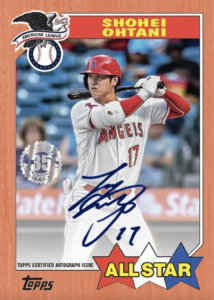
The second way to secure a player’s autograph is via sticker. In this instance, the producer sends a stack of stickers to the signer, who signs each one and returns the completed stack. The producer then affixes the stickers to fresh cards.
This method is sometimes preferable because the producer can use the autographs across different product lines, and sticker autos are generally easier to secure for producers. But while sticker autos are still autos (and, thus, highly valuable), they don’t always hold the same kind of power over collectors. In addition to lacking the “personal touch” of an on-card autograph, sticker autos don’t always look as clean.
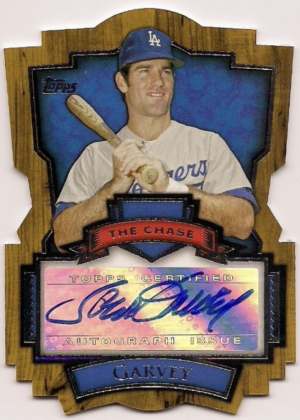
Topps and other card producers try to do on-card signatures as much as possible. “The market has shown us that on-card autographs carry higher demand,” Fullerton said. “But sometimes, due to various factors, like speed-to-market or athlete availability, we will use sticker autos.”
The final method is called a “cut signature.” That’s when the card producer acquires a document (usually an old one) with a signature — like a contract or a check — from a trusted source. The producer then cuts the signature out of the original document and incorporates that relic into a brand-new card. This method is generally reserved for deceased historical figures who can’t create new signatures. 2023 Topps Series 1, for example, included a subset of cut signatures featuring all-timers like Babe Ruth, Jackie Robinson, and Satchel Paige. Cut signatures are usually extremely valuable because of their scarcity and the legendary status of the signers.
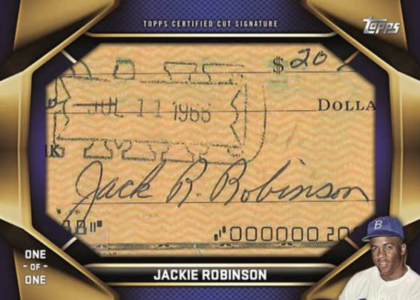
“The collectibles business is built around rarity, and so the inherent rarity of athlete signatures leads to value there,” said Fullerton.
Keeping it Real
Now, unless you see a player autograph your card right in front of you, all collectors have to be vigilant about fraud. That’s just the nature of valuable items — if there’s something that everyone wants, scammers will try to create a fake version and profit from it.
Topps has established protocols to ensure all its autographed cards are legitimate. First, a Topps representative (either a full-time employee or member of its network of contractors) is always present on-site with the player when they sign. For example, Fullerton mentioned that his colleague recently flew out to Paris to facilitate a signing with top NBA prospect Victor Wembanyama.
Once the signatures are complete and a Topps rep confirms that they witnessed the player signing the cards, they are sent to a Topps facility in Texas, where the cards are double-checked against the signature on file that Topps keeps for most major athletes.
For cut signatures, Topps has a small collection of trusted vendors from whom it acquires relics most frequently. Occasionally, the company will branch outside of that group for the desired item, but it would need a major authenticator to sign off on the signature’s legitimacy.
Autos Coming Soon: Topps Sterling
While nearly every card set Topps releases has at least a few autos, a few products are dedicated to those highly-coveted grails. One is Topps Sterling, a top-shelf, super-premium release that caters to high-rolling collectors. No card in the set is numbered higher than 25, and much of the set is one-of-one.
“Topps Sterling was created to be the pinnacle of high-end trading card products,” Fullerton said.
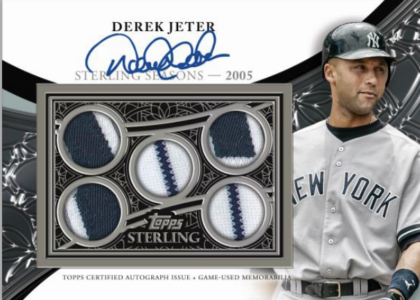
After debuting in the late 2000s, Topps Sterling spent an extended period on hiatus — Fullerton said the market wasn’t responding to the set as Topps hoped it would. Since the past five years have dramatically changed the collecting landscape, the market is much better suited to luxury products.
Fullerton’s favorite part about Topps Sterling is the opening experience. Once you open up a master box, you’re confronted with two mini boxes, each labeled with its own theme. It could be “All-Time Yankees Greats,” or “Rookie of the Year Winners.” Then, you have a decision to make — Keep on opening? Sell it? Hold the sealed mini box? Trade it for something that’s more up your alley?
Should you continue opening, you’re met with ornate designs and some of the most unique relic pieces in collecting today. Focusing primarily on current superstars and legends of the past (though the set does include a few prospects), Topps Sterling cards include one-of-a-kind items like bat knobs and bat nameplates, and jersey patches.
Not a baseball fan but still love autos? One cut autograph subset includes non-athletes like singer Aretha Franklin, actress Grace Kelly, and college basketball coach John Wooden.
Whether you want to pay up for big-hit autos with a Topps Sterling box or play the long game by hunting signed cards in standard products, there’s nothing like the chase.
